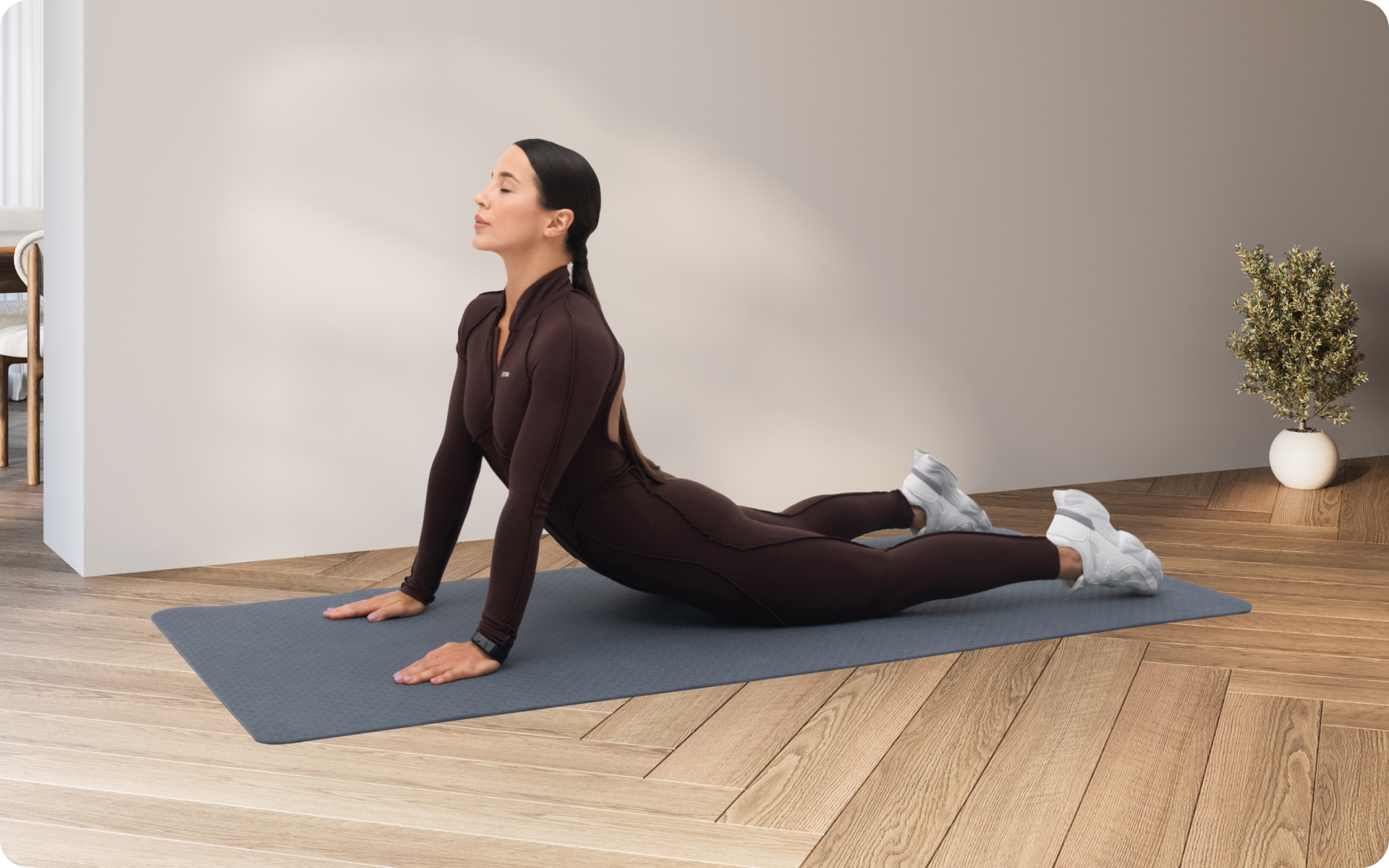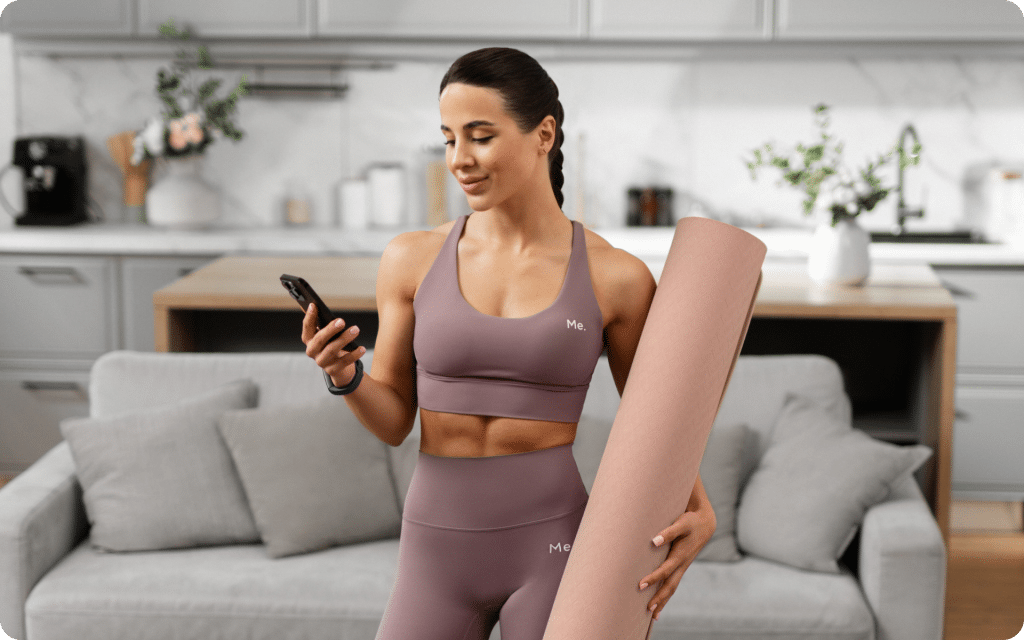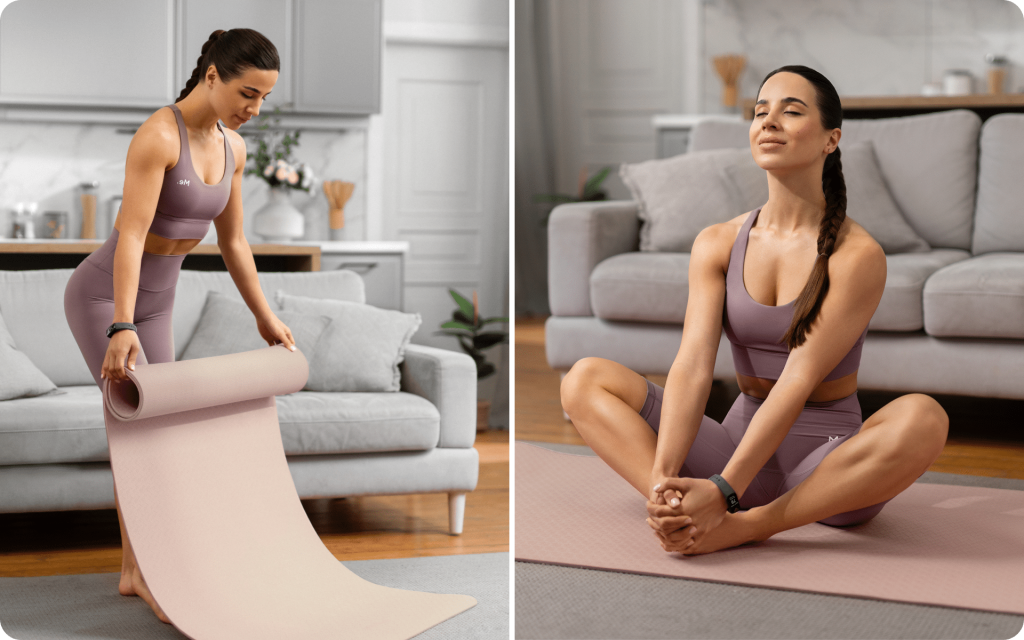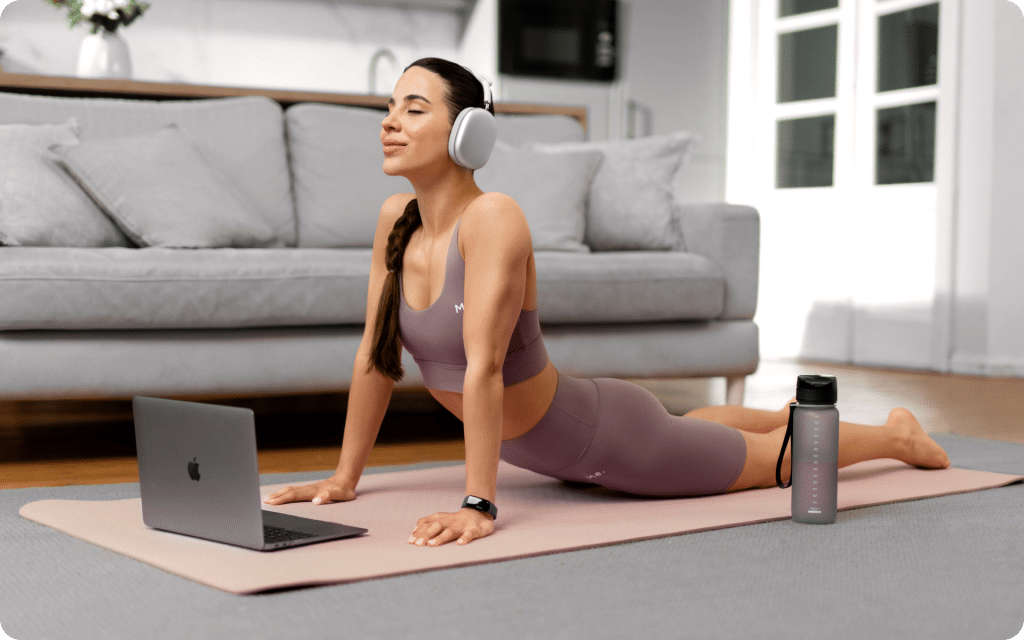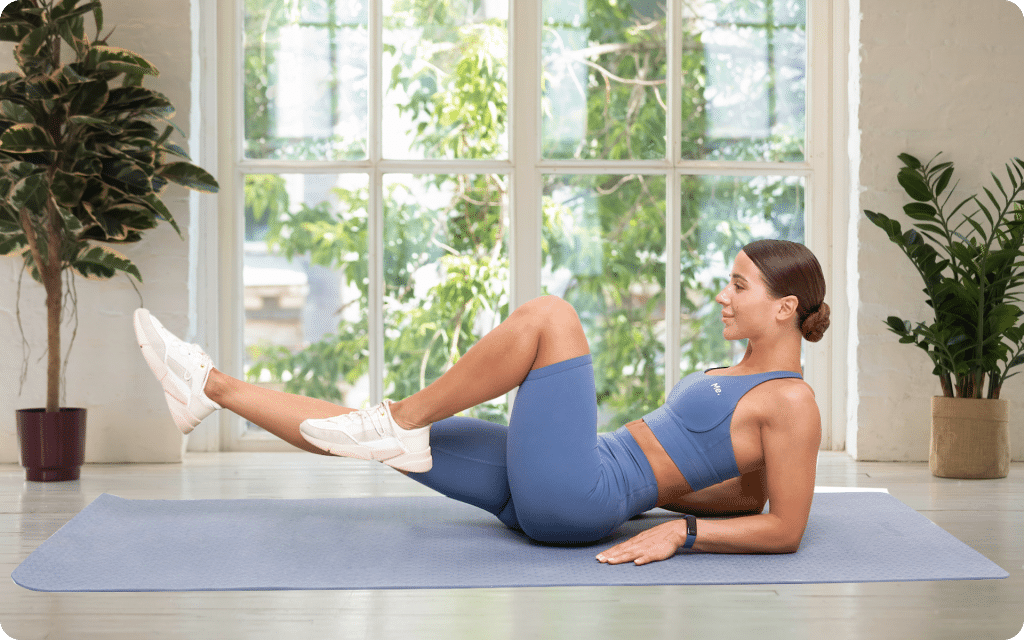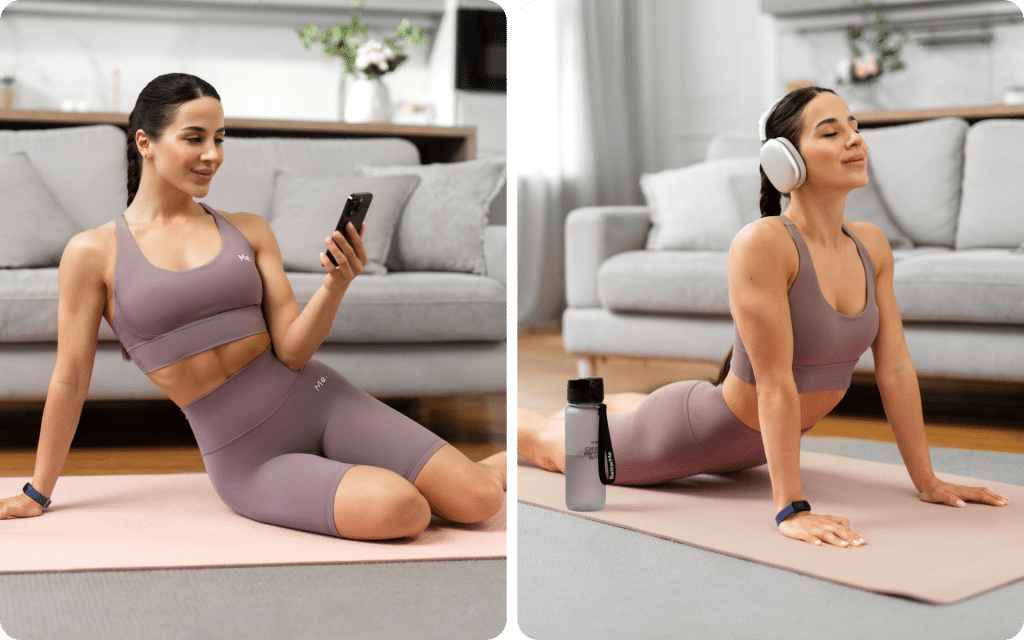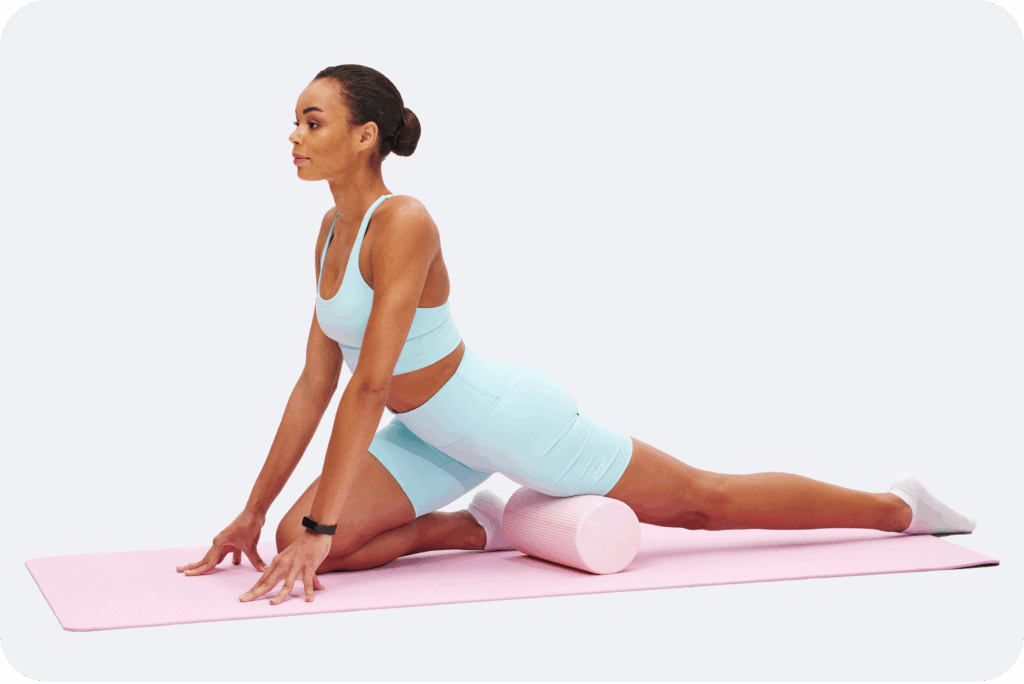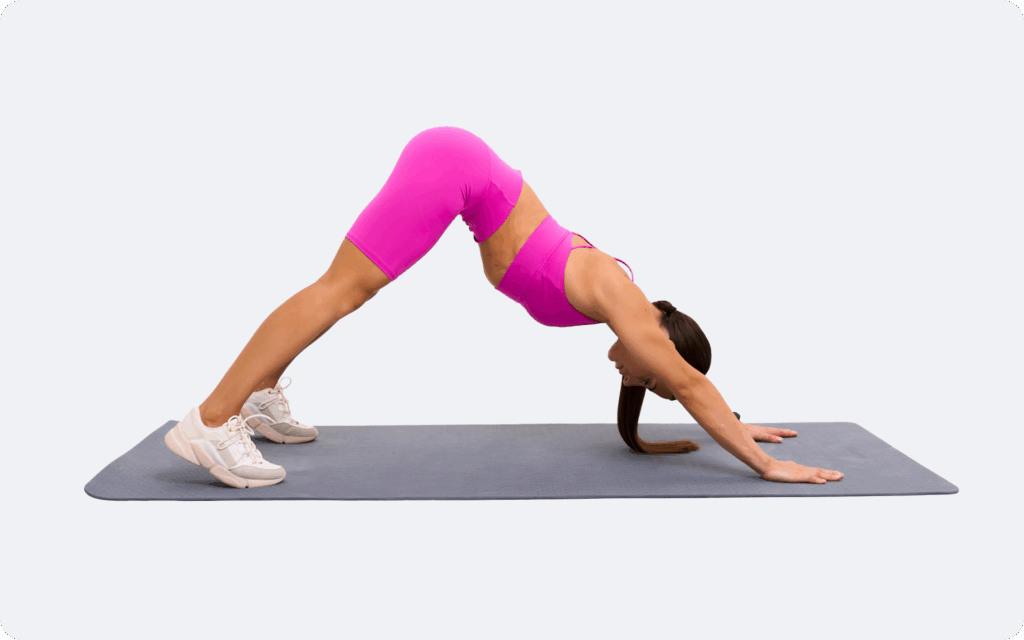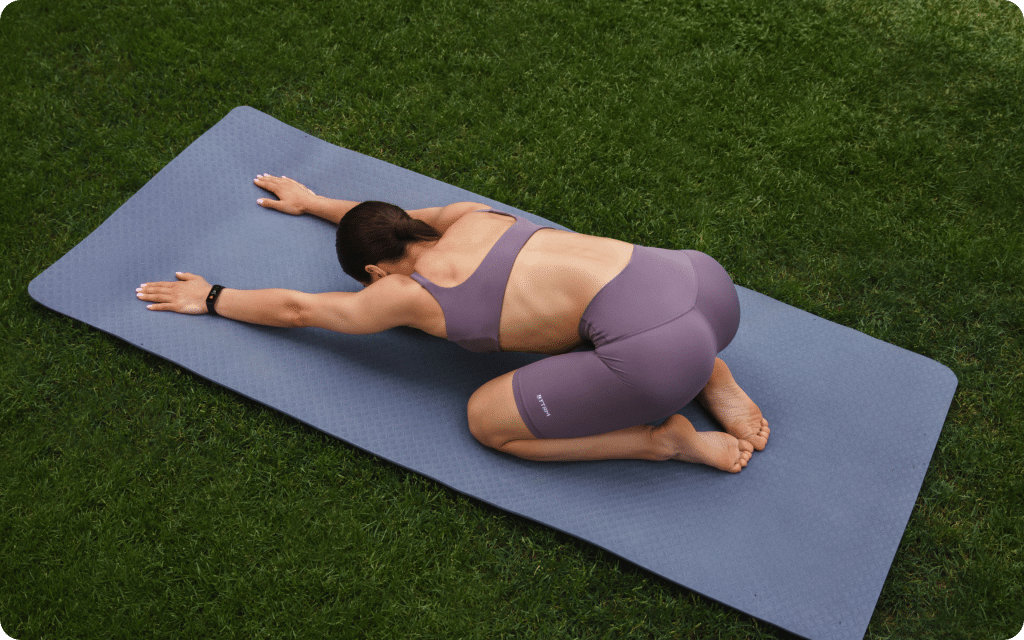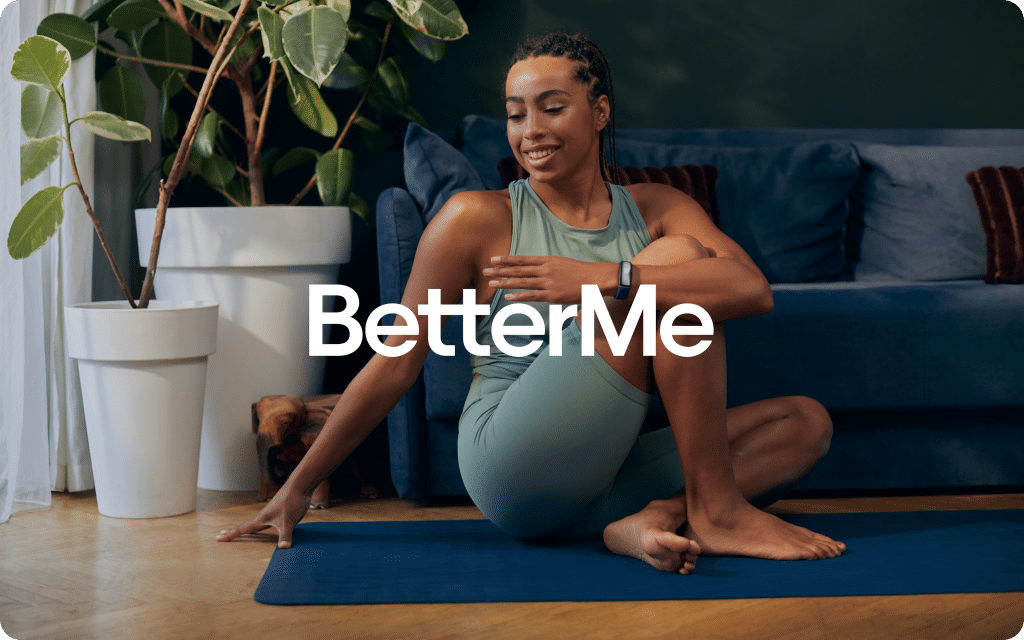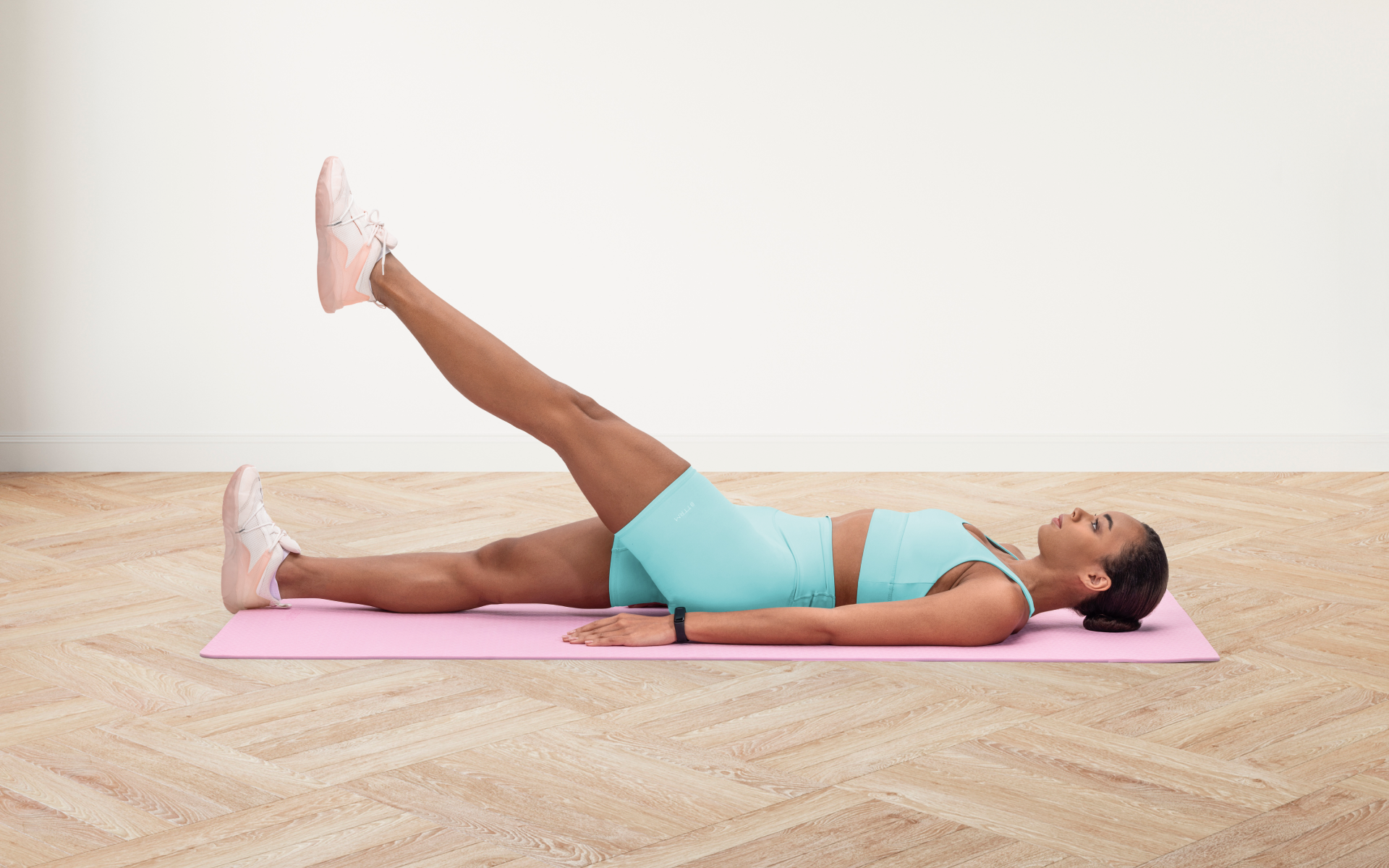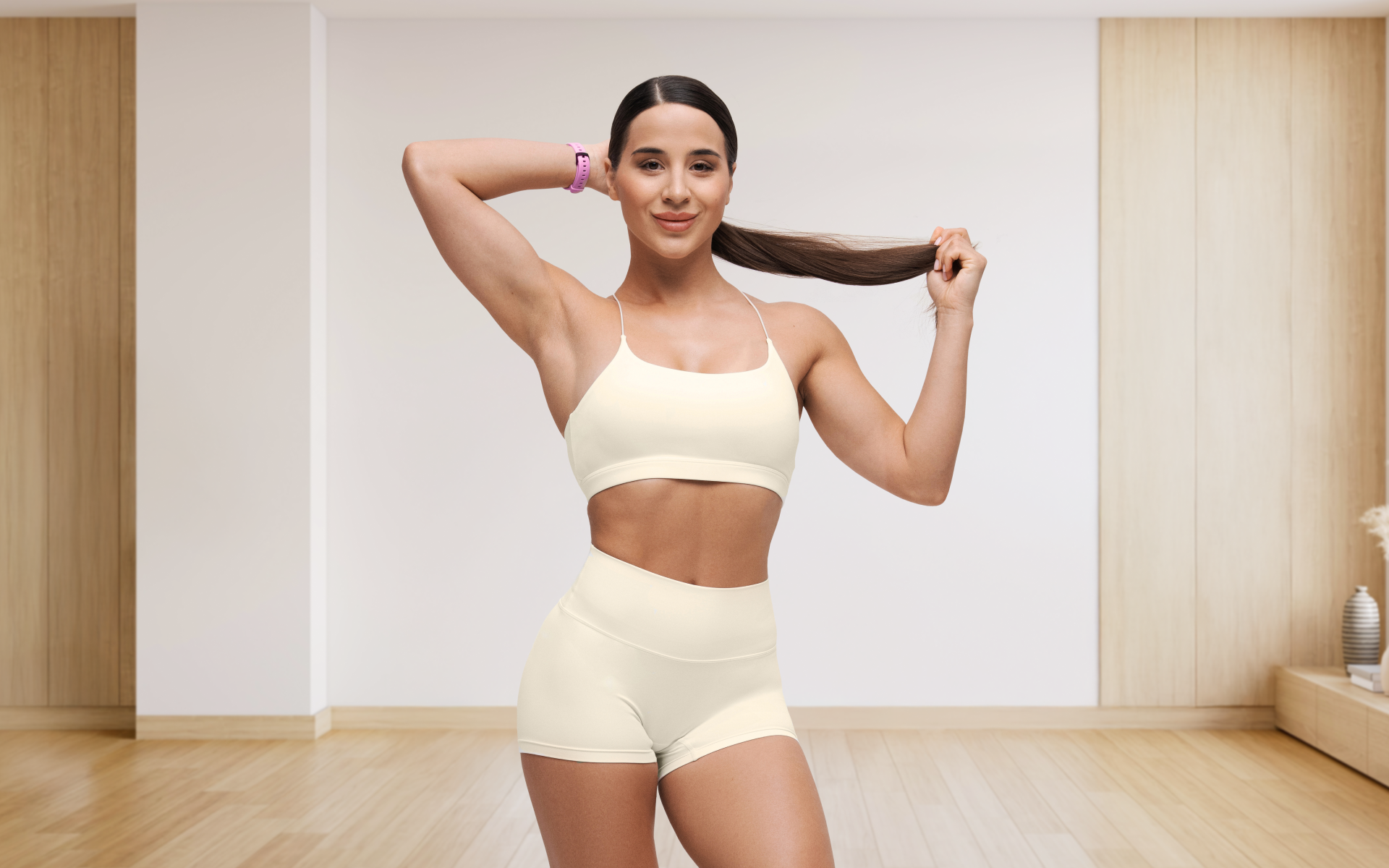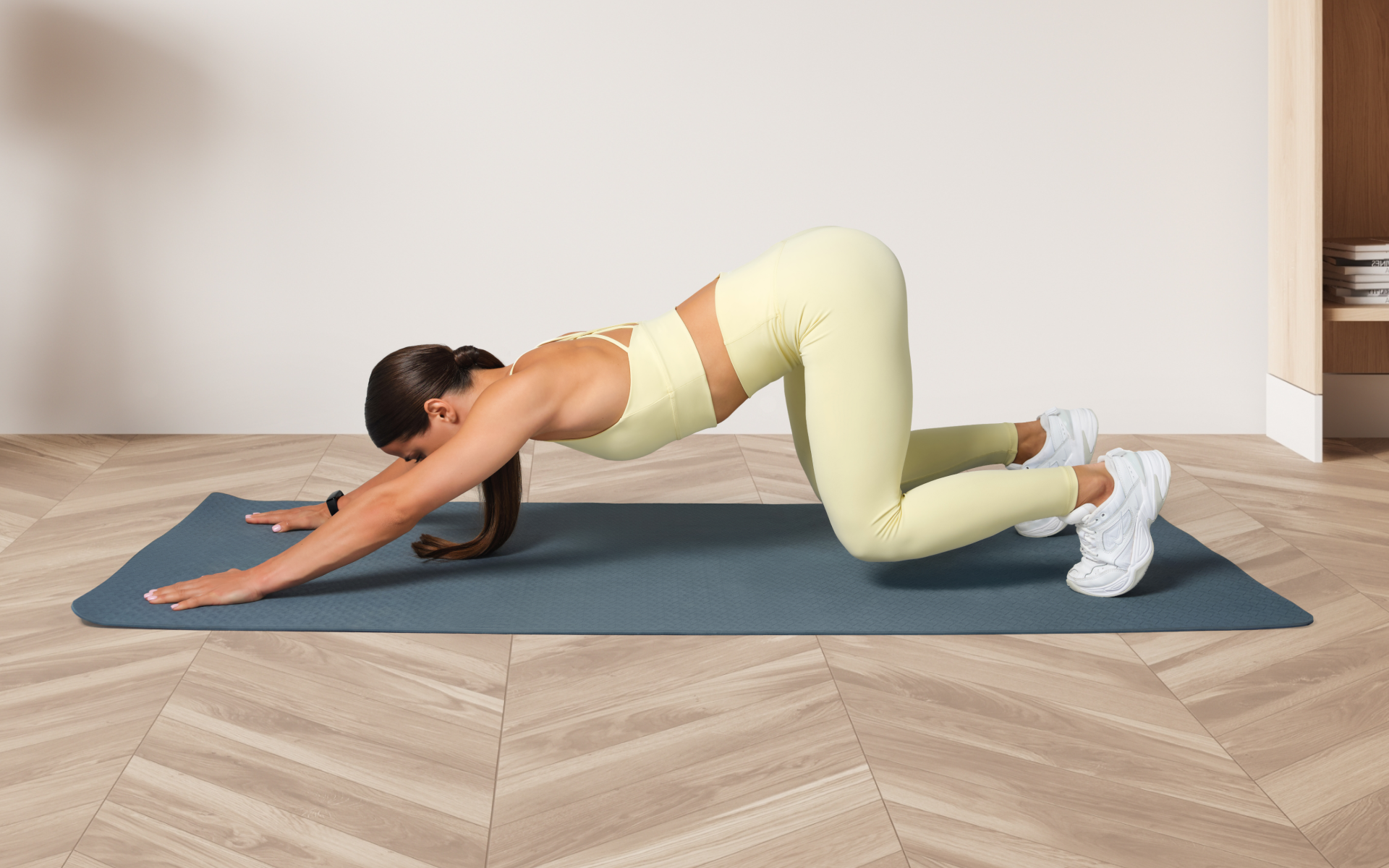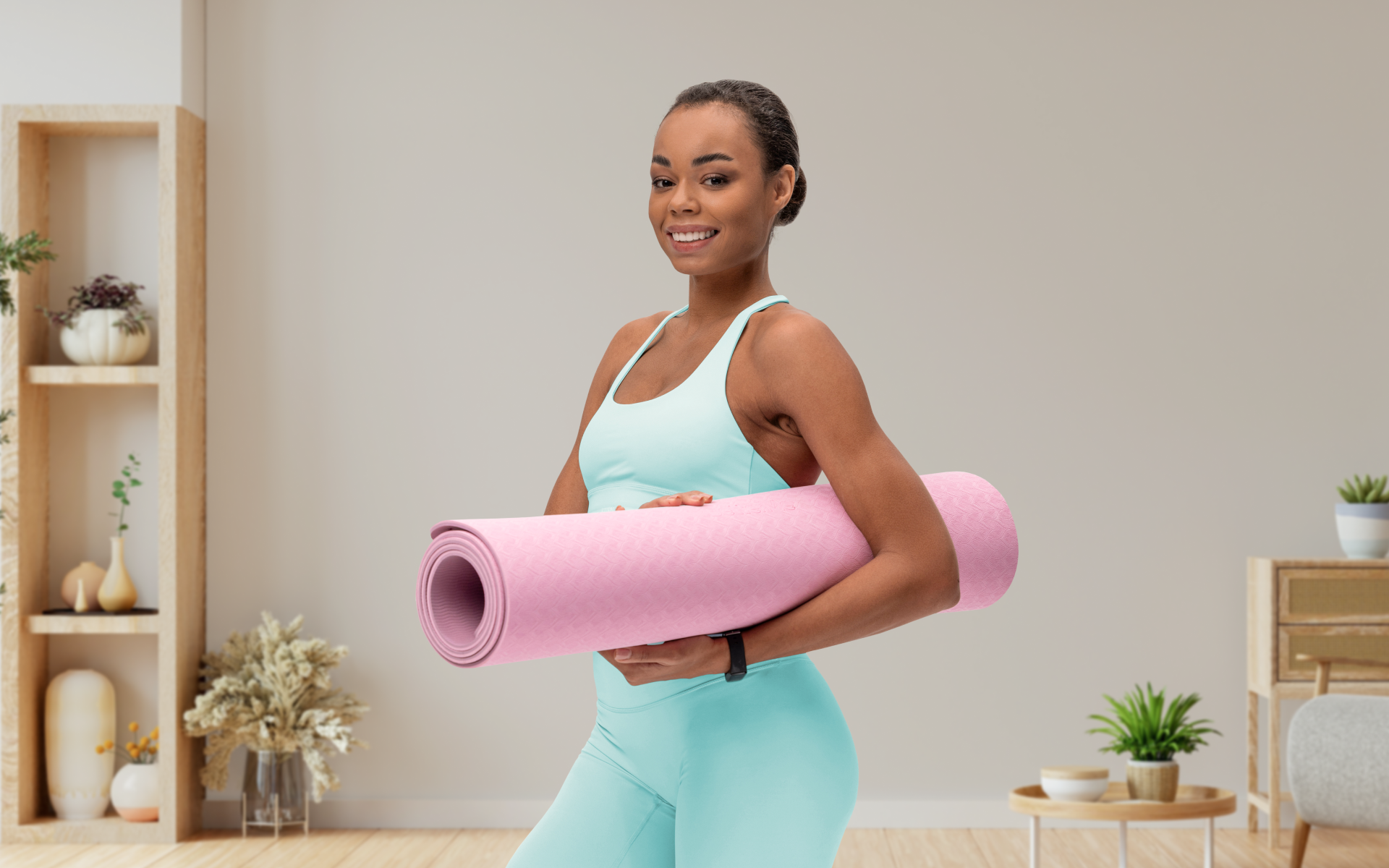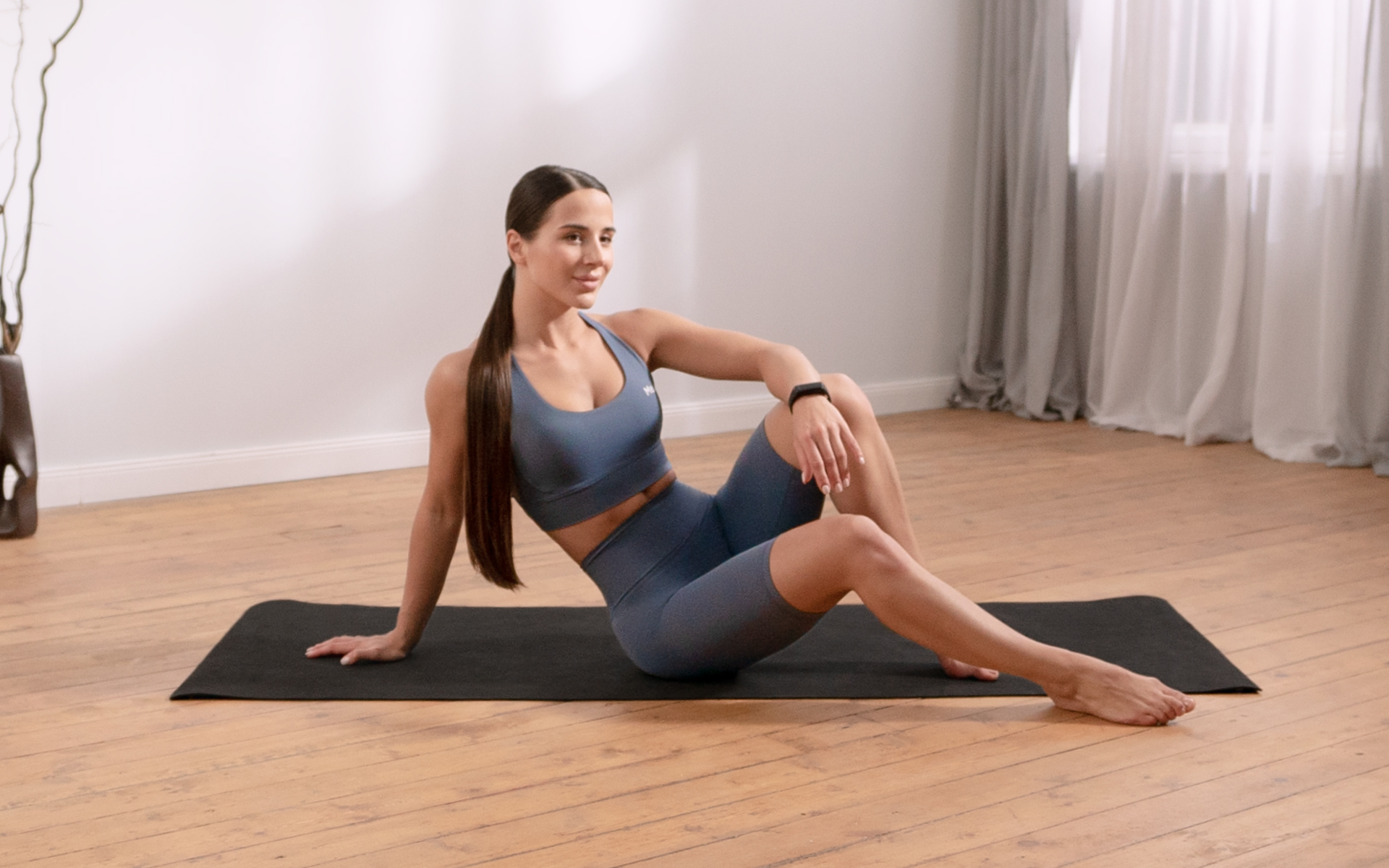The world of fitness is filled with countless methods and routines, but few have stood the test of time like Pilates. Developed by Joseph Pilates in the early 20th century, this practice, which he called “Contrology”, emphasizes the complete coordination of body, mind, and spirit. The foundational mat work is the perfect entry point, offering a powerful workout that requires nothing more than a mat and your own body weight.
This guide will walk you through everything you need to know to build your own effective mat Pilates sequence.
We’ll cover the principles of a good workout, how to structure it, and provide a detailed list of the original 34 exercises. You’ll learn how to create a balanced routine tailored to your goals, helping you restore physical vitality and invigorate your mind.
What Is a Good Mat Pilates Sequence?
A good mat Pilates workout is more than just a random collection of exercises. It’s a thoughtful sequence that is designed to challenge your body while adhering to the core principles of the practice. According to Joseph Pilates’ seminal work, Return to Life through Contrology, the ultimate goal is to develop the body uniformly, correct posture, and restore vitality (1). While every workout can be unique, a quality sequence shares several key characteristics.
- Has a Clear Purpose
Every workout should have a goal. Are you looking to build core strength, improve flexibility, or target your upper body? A good sequence is built around this purpose, with exercises chosen specifically to help you achieve it. Without a clear objective, a workout can feel disjointed and less effective.
- Has a Logical Flow
A well-designed sequence flows smoothly from one exercise to the next. Transitions should feel natural and intuitive, allowing you to maintain focus and momentum. This flow isn’t just for aesthetics, it helps keep your muscles warm and engaged, which creates a more cohesive and efficient workout experience.
- Has Balance
Balance is a cornerstone of Pilates.
A good sequence works the body uniformly, which ensures no muscle group is over- or under-trained. This means including exercises that target the front, back, and sides of your body. A balanced workout should incorporate flexion, extension, side bending, and rotation to promote symmetrical strength and flexibility.
Whether you’re a workout beast or just a beginner making your first foray into the world of fitness and dieting – BetterMe has a lot to offer to both newbies and experts! Install the app and experience the versatility first-hand!
- Has Modifications and Progressions
Your workout should meet you where you are. A quality mat Pilates sequence is adaptable, offering modifications for beginners and progressions for more advanced practitioners. This scalability ensures the workout remains challenging yet accessible as your strength and skill improve. It’s about working smarter, not just harder.
- Encourages Mind-Body Connection
Pilates isn’t just physical, it’s mental too. A good sequence encourages you to be present and fully engaged. Each movement should be performed with concentration and precision, connecting your mind to your muscles. This focus enhances the effectiveness of each exercise and transforms your workout into a form of moving meditation.
- Has Proper Pacing
The rhythm of your workout matters. A well-paced sequence balances high-intensity movements with moments of recovery. This allows you to challenge your body without burning out, maintaining energy and proper form from start to finish. The pace should feel deliberate, not rushed, allowing you to execute each movement with control.
- Has a Warm-Up and Cool-Down
Every good workout starts with a warm-up and ends with a cool-down.
The warm-up prepares your body for the work ahead by increasing blood flow and activating key muscle groups (2). The cool-down helps your body gradually return to a resting state, improving flexibility and aiding recovery (3). These components are essential for preventing injury and maximizing results.
Read more: Pilates Moves List: The Original 34 Mat Exercises
How to Structure a Mat Pilates Workout
Structuring a mat Pilates workout involves more than just picking exercises. It’s about creating a holistic experience that honors the principles of Contrology. Here’s a step-by-step guide to help you build a thoughtful and effective routine.
1. Set Your Intention
Before you even step on the mat, decide what you want to achieve. Is your goal to energize your body for the day ahead, or are you looking to unwind and release tension after a long day? Setting an intention will guide your exercise selection and help you stay focused throughout your practice.
2. Start with a Gentle Warm-Up
Start your workout by gently waking up your body. A good warm-up increases circulation and prepares your muscles for more demanding movements (2). Focus on mobilizing your spine and activating your core. Simple exercises such as pelvic tilts, cat-cow stretches, and gentle spinal twists are excellent choices. This phase should last approximately 5-10 minutes.
3. Build the Core Work
Once your body is warm, it’s time to move into the heart of your workout. This is where you’ll perform the more challenging exercises that build strength and stamina. A well-structured sequence often starts with foundational core exercises on your back, such as the hundred, and gradually progresses to more complex movements that integrate the entire body.
4. Vary Your Positions
To ensure a full-body workout, move through different positions on the mat. Include exercises performed on your back (supine), on your stomach (prone), and on your side. This variety ensures you are targeting all major muscle groups and moving your spine in every direction. For example, after a series of supine exercises, you might transition to a prone exercise such as the swan to work your back extensors.
5. Incorporate a Peak Pose or Challenge
If you have a specific goal, such as mastering a challenging exercise, dedicate a portion of your workout to it. A “peak pose” is an advanced movement that you build up to throughout the sequence. For example, if your goal is to perform the teaser, you would include preparatory exercises that strengthen the necessary muscles and teach the required coordination.
6. End with a Restorative Cool-Down
Finish your workout with a series of stretches to cool down and release any remaining tension. This is the time to focus on flexibility and recovery. Hold gentle stretches for your hamstrings, hips, and back. A few moments of quiet relaxation at the end can help integrate the work you’ve done and leave you feeling refreshed and centered.
What Are Some Effective Mat Pilates Exercises to Include?
The original classical mat Pilates sequence consists of 34 exercises detailed in Joseph Pilates’ Return to Life through Contrology (1). This list provides a comprehensive blueprint for a powerful, full-body workout.
Here is the complete mat Pilates exercise list:
1. The Hundred
- Lie on your back with your arms by your sides.
- Bend your knees into your chest and curl your head and shoulders off the mat.
- Hover your arms up to the height of your abdominal wall.
- Extend your legs to a 45-degree angle with your heels together and your toes apart.
- Pump your arms vigorously up and down. Inhale for 5 counts and exhale for 5 counts.
- Complete 10 sets for a total of 100 pumps.
2. The Roll Up
- Lie on your back with your legs straight and your arms extended overhead.
- Inhale as you lift your arms toward the ceiling.
- Exhale as you roll your spine up and off the mat, one vertebra at a time, reaching toward your toes.
- Inhale at the top, and exhale as you roll back down with control.
3. The Roll Over
- Lie on your back with your legs extended toward the ceiling.
- Inhale to prepare.
- Exhale as you lift your hips and roll your legs over your head until they are parallel to the floor.
- Flex your feet, separate your legs shoulder-width apart, and exhale as you roll back down slowly.
4. The One Leg Circle
- Lie on your back with one leg extended toward the ceiling and the other flat on the mat.
- Circle the extended leg across your body, down, around, and back to the starting position.
- Perform 5 circles in each direction, then switch legs.
5. Rolling Back (Rolling Like a Ball)
- Sit on the mat, hugging your knees into your chest and lifting your feet off the floor.
- Find your balance on your sit bones, keeping your spine in a C-curve.
- Inhale as you roll back to your shoulder blades.
- Exhale as you roll back up to the starting position without allowing your feet to touch the mat.
6. The One Leg Stretch
- Lie on your back and hug both knees into your chest.
- Curl your head and shoulders off the mat.
- Extend one leg out to a 45-degree angle while holding the opposite knee.
- Switch legs with control, keeping your torso stable.
7. The Double Leg Stretch
- From the same starting position as the one leg stretch, curl your head and shoulders up.
- Inhale as you extend both arms and legs away from your center.
- Exhale as you circle your arms around and hug your knees back into your chest.
8. The Spine Stretch
- Sit up tall with your legs extended straight in front of you, slightly wider than your hips.
- Inhale to lengthen your spine.
- Exhale as you round your spine forward, reaching your hands toward your feet while keeping your sit bones anchored.
- Inhale as you stack your spine back up to a tall, seated position.
The remaining 26 exercises of the original 34 follow, building in complexity and challenge:
- Rocker with Open Legs
- The Corkscrew
- The Saw
- The Swan-Dive
- The One Leg Kick
- The Double Leg Kick
- The Neck Pull
- The Scissors
- The Bicycle
- The Shoulder Bridge
- The Spine Twist
- The Jack Knife
- The Side Kick
- The Teaser
- The Hip Twist
- Swimming
- The Leg-Pull-Front
- The Leg-Pull-Back
- The Side Kick Kneeling
- The Side Bend
- The Boomerang
- The Seal
- The Crab
- The Rocking
- The Control Balance
- The Push-Up
How Many Exercises Are in a Mat Pilates Workout?
There’s no strict rule for how many exercises you should include in a single workout. The original 34 exercises were designed to be performed in their entirety, but Joseph Pilates himself encouraged daily practice, even if it was just for a short period. The key is to work backward from your goal.
For example, if you want a full-body workout, select a variety of exercises that target different muscle groups and planes of motion. An effective sequence doesn’t need to be overly lengthy to be beneficial (requiring more than an hour for a sequence may be a sign that you’re performing too many exercises, or that you’re resting too long in between exercises).
Here’s an example of a mat Pilates sequence for an at-home workout, using 10 exercises from the foundational list:
- The Hundred (1 set of 100 pumps) – Warm-up and core activation
- The Roll Up (5-8 reps) – Spinal articulation and abdominal strength
- Rolling Back (5-8 reps) – Spinal massage and balance
- The One Leg Stretch (8-10 reps per leg) – Core endurance and coordination
- The One Leg Circle (5 circles each way, each leg) – Hip mobility and core stability
- The Shoulder Bridge (5-8 reps) – Glute and hamstring strength, spinal articulation
- The Side Kick (8-10 reps of each variation per leg) – Outer thigh and glute strength
- The Push-Up (6-8 reps) – Upper-body and core strength
- Leg Pull Front Support (6-8 reps) – Shoulder and upper-back strength, core stability
- The Plank (30 seconds) – Core stability and coordination
Repeat this sequence 2-3 times, leaving out the warm-up exercise. When you move through this sequence, focus on flowing seamlessly from one exercise to the next. Rest should be minimal, just enough to transition into the next position. This maintains the dynamic nature of the practice.
Reasons why BetterMe is a safe bet: a wide range of calorie-blasting workouts, finger-licking recipes, 24/7 support, challenges that’ll keep you on your best game, and that just scratches the surface! Start using our app and watch the magic happen.
At the end of the sequence, use static (stationary or non-dynamic) stretches to cool down. For example, the child’s pose, downward facing dog, and pigeon stretch can all help to stretch out your muscles and prevent tightness.
Pigeon Pose
- Start in a plank position, then bring your right knee forward toward your right wrist.
- Place your right shin on the mat so it’s angled comfortably, with your foot near your left hip.
- Slide your left leg straight back, ensuring your hips are squared and not tilting to one side.
- Lower your upper body down, either keeping your hands on the mat for support or resting your forehead on your forearms for a deeper stretch.
- Hold the position, breathing deeply, and then switch sides to repeat the stretch on the left.
Downward Facing Dog
- Start on all fours with your wrists directly under your shoulders and your knees directly below your hips.
- Spread your fingers wide, pressing your palms firmly into the mat.
- Tuck your toes under and lift your knees off the ground, pushing your hips up and back to form an inverted “V” shape.
- Straighten your legs without locking your knees, allowing your heels to reach toward the mat.
- Keep your head between your arms and gaze toward your knees or navel, maintaining a strong, engaged core and steady breathing.
Child’s Pose
- Start in a kneeling position, sitting back onto your heels.
- Spread your knees apart while touching your big toes together.
- Lower your upper body forward, allowing your forehead to rest gently on the mat.
- Stretch your arms forward with palms facing down, or place them by your sides for a more relaxed variation.
- Breathe deeply, relaxing your shoulders and sinking your hips further into your heels.
For more targeted routines, you can explore specialized workouts such as Pilates for stomach and waist.
How Long Should a Mat Pilates Sequence Be?
A mat Pilates workout can be as short or as long as you need it to be. Joseph Pilates famously said, “Make up your mind that you will perform your Contrology exercise for 10 minutes without fail.” He believed that consistency was more important than duration.
A quick 10-15 minute session can be a great way to start your day or squeeze in a workout on a busy schedule. A longer session of 30 minutes allows for a more comprehensive workout, including a thorough warm-up, a wider variety of exercises, and a longer cool-down. The ideal length will depend on your fitness level, goals, and available time.
If you’re short on time, a targeted 5-minute Pilates routine can still be incredibly effective.
Read more: Beginner Mat Pilates Leg Workout For Strong, Toned Legs
How Many Times a Week Should I Do Mat Pilates?
Joseph Pilates recommended practicing his method four times a week to achieve optimal results. He believed this frequency would lead to the development of a uniformly strong body and a revitalized mind (1).
However, the ideal frequency for you will depend on your personal goals and lifestyle. Even practicing 2-3 times a week can lead to significant improvements in strength, flexibility, and posture. The most important thing is to listen to your body and find a routine you can stick with consistently.
For those in different life stages, adapting the practice is key. For example, there are many benefits of Pilates for older women.
A typical Pilates class follows a logical structure: it starts with a gentle warm-up to prepare the body, moves into a series of core-focused exercises that build in intensity, incorporates movements in various positions (supine, prone, side-lying), and finishes with a cool-down of stretching and relaxation. The original, or classical, mat Pilates system consists of 34 distinct exercises, as laid out by Joseph Pilates in his book Return to Life through Contrology. Neither practice is inherently “better” – they simply have different focuses. Pilates emphasizes core strength, precise alignment, and controlled movements to build a uniformly developed body (4). Yoga often incorporates a more spiritual element, with a greater emphasis on sustained poses (asanas), breathwork (pranayama), and flexibility (5). The best choice will depend on your personal goals. Mat Pilates is generally categorized into three levels: beginner, intermediate, and advanced. Beginner classes focus on mastering the foundational principles and basic exercises; intermediate classes introduce more complex movements and require greater strength and control; and advanced classes challenge practitioners with the full classical sequence and its most demanding variations.Frequently Asked Questions
What is the basic structure of a Pilates class?
How many mat Pilates moves are there?
Is mat Pilates better than yoga?
What are the levels of mat Pilates?
The Bottom Line
Creating a mat Pilates sequence is both an art and a science. It requires understanding the foundational principles of the practice while tailoring the workout to your individual needs and goals. By focusing on flow, balance, and the mind-body connection, you can design a routine that transforms your body and invigorates your spirit. Start with the sample routine in this article, remain consistent, and enjoy the journey to a stronger, more balanced you.
DISCLAIMER:
This article is intended for general informational purposes only and does not serve to address individual circumstances. It is not a substitute for professional advice or help and should not be relied on for making any kind of decision-making. Any action taken as a direct or indirect result of the information in this article is entirely at your own risk and is your sole responsibility.
BetterMe, its content staff, and its medical advisors accept no responsibility for inaccuracies, errors, misstatements, inconsistencies, or omissions and specifically disclaim any liability, loss or risk, personal, professional or otherwise, which may be incurred as a consequence, directly or indirectly, of the use and/or application of any content.
You should always seek the advice of your physician or other qualified health provider with any questions you may have regarding a medical condition or your specific situation. Never disregard professional medical advice or delay seeking it because of BetterMe content. If you suspect or think you may have a medical emergency, call your doctor.
SOURCES:
- PILATES’ – Return to Life Through – Contrology (1945, books.out.csli.me)
- Warm-Up Strategies for Sport and Exercise: Mechanisms and Applications (2015, researchgate.net)
- Do We Need a Cool-Down After Exercise? A Narrative Review of the Psychophysiological Effects and the Effects on Performance, Injuries and the Long-Term Adaptive Response (2018, link.springer.com)
- Exploring the therapeutic effects of yoga and its ability to increase quality of life (2011, pmc.ncbi.nlm.nih.gov)
- Pilates: how does it work and who needs it? (2011, pmc.ncbi.nlm.nih.gov)
